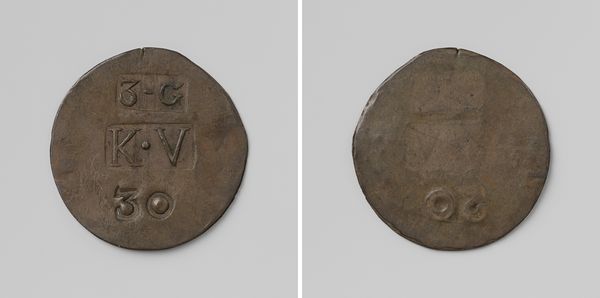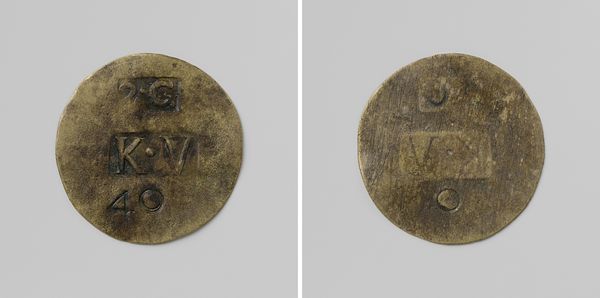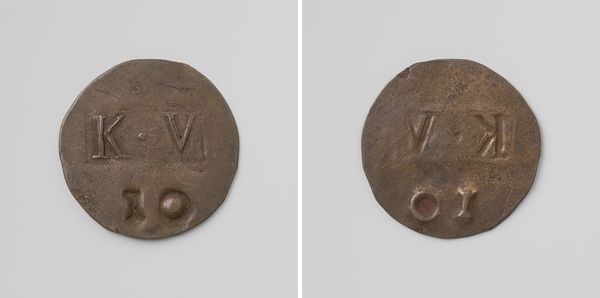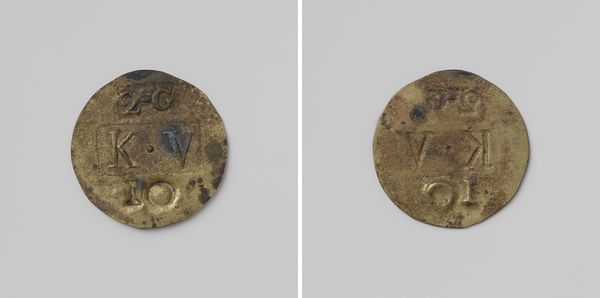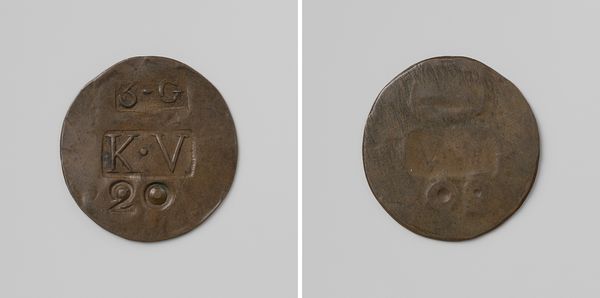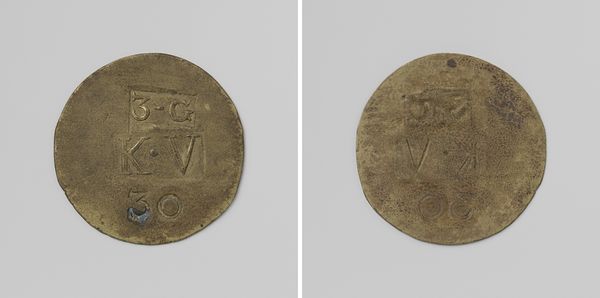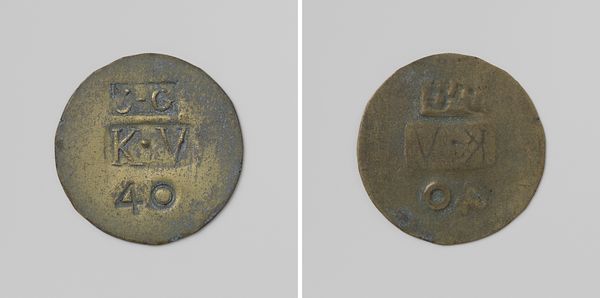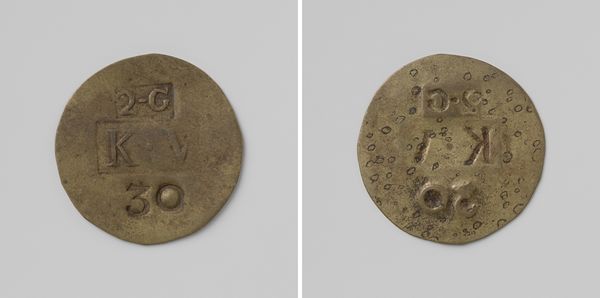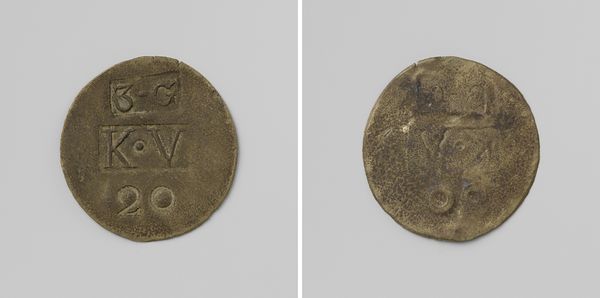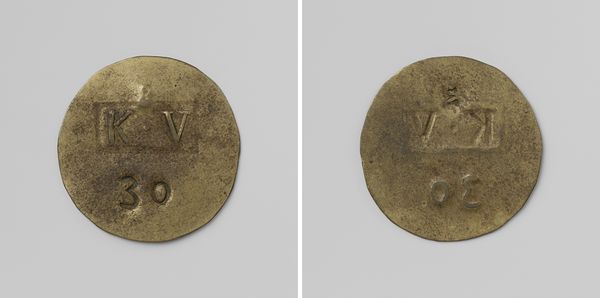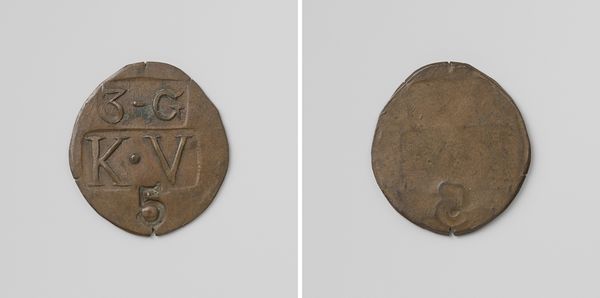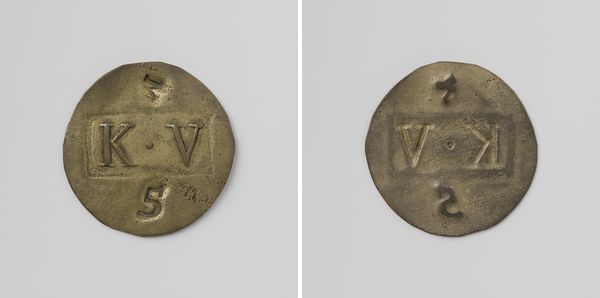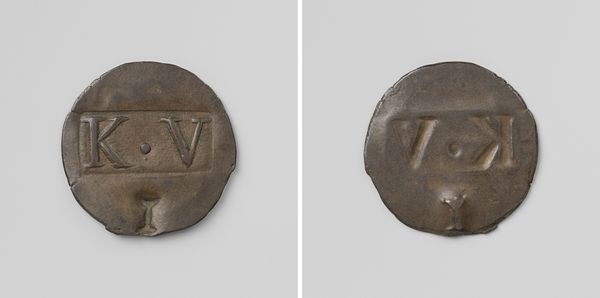
Kolonie Veenhuizen, huismunt van veertig cent, geslagen op last van de Maatschappij van Weldadigheid ter waarde van 40 cent 1818 - 1859
0:00
0:00
print, metal, sculpture
#
medieval
# print
#
metal
#
sculpture
#
sculpture
Dimensions: diameter 3.7 cm, weight 2.79 gr
Copyright: Rijks Museum: Open Domain
This anonymous coin from Kolonie Veenhuizen presents a fascinating study in the structural dynamics of value and control. Made from a base metal, its worn surface and simple design speak volumes. The coin’s circular form, a common shape for currency, is immediately subverted by the roughly stamped letters ‘K.V.’ and the number ‘40.’ These inscriptions, far from elegant, suggest a utilitarian purpose, a functionality stripped bare. The lack of artistic embellishment underscores its function as a tool within a closed system. This relates to broader theories about power and representation; the coin flattens economic exchange to a mere token, controlling it within the colony. It also asks us to consider the semiotics of money: how does a simple object come to represent value, and what does it mean when that representation is so starkly rendered? The material and design of the coin serve not just as a medium of exchange, but as a stark reminder of the controlled environment in which it circulated. It challenges our understanding of value and questions the mechanisms of social engineering embedded within everyday objects.
Comments
No comments
Be the first to comment and join the conversation on the ultimate creative platform.
